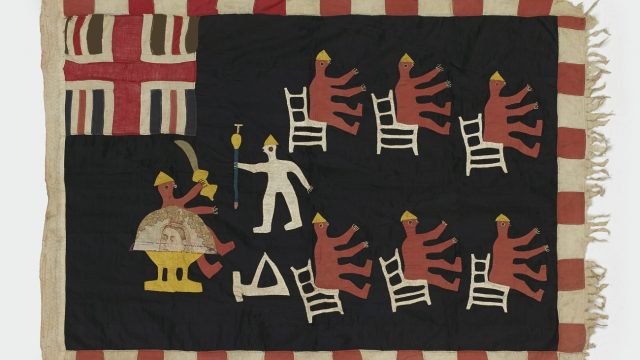The South Kensington Museum continued to increase its textile collection between 1880 and 1900. During this period the museum acquired significant items, such as the so-called Coptic textiles from Egypt, or velvets such 81a-b-1892 or 334-1886. In this blog, I like to highlight those related to the Interwoven project.
One prominent collector and textile expert who was known to the Museum was Robert Forrer (1866 – 1947). He was an archaeologist and collector in Strasburg, with collections ranging from furniture to jewellery, from tiles to books and clocks, mostly from Europe. The core of his collection was textiles from all periods and provenances, from China and Japan to Iberia (fig. 1) and Egypt. He excavated in the Egyptian necropolis of Akhmim in 1894, and he was very interested in silk textiles and their development from Late Antiquity (from the 4th century AD).


Like F. Bock, he displayed his collection (fig. 2) in a didactic way, highlighting historical considerations such as the development of silk textiles and textile weaves, and workshops. In 1899 he offered to the Museum a collections of 1200 textiles that were acquired, comprising textiles from Late Antiquity to the Modern period, from Germany and Iberia to Japan.
The last acquisition that I would like to highlight is the one from Stanislas Baron, a Parisian art dealer. The Museum acquired several fragments (103) in 1893 for 2400 marcs and in 1896 a set of textiles and ecclesiastical vestments, eight of them donated by Baron to the Museum. He was well connected with important Spanish figures, such as Raimundo de Madrazo, a painter known for his portraits. In the 1896 acquisition, there is a note on the orphrey 669/1896 (fig. 3) explaining that:

This orphrey was in possession of M. Baron. The rest was bought by M. Madrazo the artist. The dalmatic and chasuble of the same material are South Kensington Museum nos. 668 and 667/1896.
It could be possible that most of the textiles and ecclesiastical vestments (fig. 4) were from Raimundo de Madrazo, and possibly from Spain, further research on the relationship between Baron and Madrazo is needed.

The core of the 1893 acquisition comprised medieval textiles from Iberian and Sicilian workshops (fig. 4). One of the reports about this purchase was from William Morris who wrote on 14 June 1893:
This collection includes a great number of pieces of various dates and countries, ranging from the 10th to the 16th centuries, but the greater number of the 13th and 14th probably woven in Syria, Sicily and some few at Lucca.

The Museum’s purchases from very well-known collectors and also art dealers such as Bock, Krauth, Schulze, Forrer, and Baron, among others, means that we can find the same textile in different collections. The practice of cutting a textile into various fragments (nowadays considered ethically questionable) shows us how important textile collecting was during the 19th and early 20th centuries, and the keen interest in having as many samples as possible of different designs and weaves.
Today´s technology and on-line catalogues are helping researchers and scholars to trace and bring together these fragments and their provenance history so that the networks used in the early years of the Museum’s history become clearer.
Bibliography:
For more information on Madrazo and Baron see the research in progress by María Roca: https://uv.academia.edu/MariaRoca
Errera, I., 1907: Catalogue d’étoffes anciennes et modernes décrites par madame Isabelle Errera, Brussels.
Forrer, R., 1891: Römische und Byzantinische Seiden-Textilien aus den Gräberferlde von Achmim-Panopolis”, Strasburg.
Forrer, R., 1892: Die Gräber und Textilfunde van Akhmim-Panopolis, Strasburg.
Gere, Charlotte, and Carolyn Sargentson, eds. 2002: ‘The Making of the South Kensington Museum: Curators, dealers and collectors at home and abroad’ in Journal of the History of Collections , 14, no.1.



Your blog was really very helpful for me and I am very glad to have such a great blog to read. I was wondering that why these things were not in my mind before.